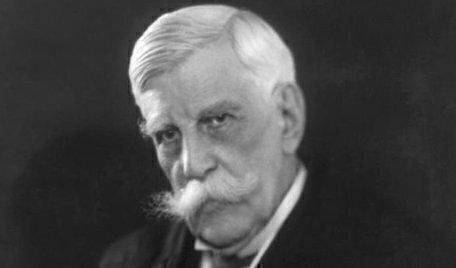On March 3, 1919, the Supreme Court decided Schenck v. United States, the first in a line of major First Amendment cases to clarify the meaning of “free speech.”
 In the case, the defendants were charged with the mailing of printed circulars to obstruct the recruiting and enlistment service, in violation of the Espionage Act 1917, which made it illegal to convey information with the intent to interfere with the operation of the U.S. armed forces and to obstruct recruitment. Charles T. Schenck was the general secretary of the Socialist party of Philadelphia. He was in charge of the Socialist headquarters from which the documents were sent, and witnessed the printing of leaflets asking drafted men to evade service in World War I. The other defendant, Elizabeth Baer, was a member of the Socialist Party’s executive board who had recorded the minutes of the party meetings.
In the case, the defendants were charged with the mailing of printed circulars to obstruct the recruiting and enlistment service, in violation of the Espionage Act 1917, which made it illegal to convey information with the intent to interfere with the operation of the U.S. armed forces and to obstruct recruitment. Charles T. Schenck was the general secretary of the Socialist party of Philadelphia. He was in charge of the Socialist headquarters from which the documents were sent, and witnessed the printing of leaflets asking drafted men to evade service in World War I. The other defendant, Elizabeth Baer, was a member of the Socialist Party’s executive board who had recorded the minutes of the party meetings.
The circulars made a series of constitutional arguments as to why the draft was unconstitutional and tyrannical. They pointed to the 13th Amendment’s Section 1 to say that a “conscript”—or a person drafted into military service—was little better than a “convict.” They also believed that it was unconstitutional under Article I, Section VIII’s power to “raise armies” and to “call out the militia” to send citizens “away to foreign shores to shoot up the people of other lands.” Finally, they argued that conscription was “despotism in its worst form” and thus citizens showed assert their First Amendment rights to rally against the government’s policy.
Justice Oliver Wendell Holmes, writing for the unanimous Court, ruled against Schenck and Baer, finding that their convictions under the Espionage Act did not conflict with the First Amendment.
In his opinion, Holmes asserted the principle which became known as the “clear and present danger test.” He asked: were the words used “in such circumstances and are of such a nature as to create a clear and present danger that they will bring about the substantive evils that Congress has a right to prevent?” It was, as Holmes wrote, “a question of proximity and degree”: “The most stringent protection of free speech would not protect a man in falsely shouting fire in a theatre and causing a panic, he said in a famous passage.
The Court admitted that normally, the content of the Socialist Party leaflets would be protected by the First Amendment. However, Holmes thought that the circumstances of World War I and the mass recruitment required for the United States to enter the war necessarily affected free speech rights, as actions that were acceptable in times of peace would now hinder the war effort, and thus they could not be protected so long as American men were at war.
Just eight months later, in Abrams v. United States, Holmes appeared to change his mind about that very concept. In a case involving the Sedition Act of 1918—an amendment to the Espionage Act of 1917—the majority of the Court upheld the act as constitutional under the “clear and present danger” test. The defendants printed and threw from a New York City building two leaflets, signed “revolutionists,” which denounced the sending of American troops to Russia, and the American efforts to impede the Russian Revolution, and advocated the cessation of the production of weapons to be used against Soviet Russia along with a general workers’ strike.
Holmes, joined by Justice Louis Brandeis, dissented. He distinguished this case from Schenck because here, he did not find the existence of intent to interfere with the American war effort, but only to support the Russian Revolution and stop American intervention there; thus, there was no forcible act of opposition to some proceeding of the United States in pursuance of the war. Holmes then famously stated his theory of the “marketplace of ideas,” whereby the First Amendment and Constitution are animated by the belief that the “ultimate good desired is better reached by free trade in ideas – that the best test of truth is the power of the thought to get itself accepted in the competition of the market, and that truth is the only ground upon which their wishes safely can be carried out.”
By the next spring, Holmes joined Brandeis in dissenting from another decision upholding convictions under the Espionage Act and argued for an understanding of “clear and present danger” which would not treat disagreement in thought and belief as disloyalty.
In 1969, the “clear and present danger” test was overruled in the landmark Brandenburg v. Ohio decision which determined under the “imminent lawless action” standard that “mere advocacy” was per se protected under the First Amendment. While Holmes’ language regarding “shouting fire in a crowded” has often been misappropriated beyond prohibiting falsely shouting fire in a theater, his broader philosophy animating the First Amendment remains with us today.
Nicholas Mosvick is a Senior Fellow for Constitutional Content at the National Constitution Center.







